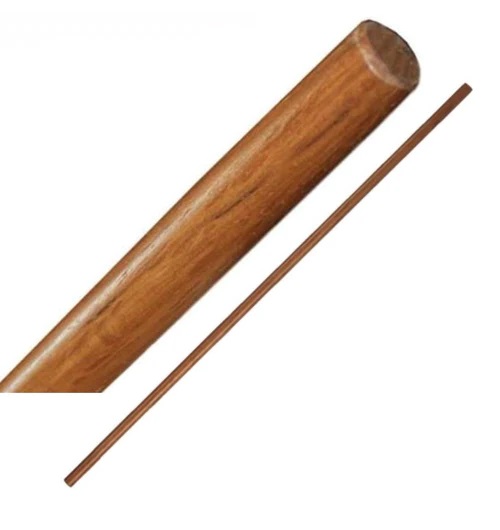
Karate is an ancient martial art that originated in Okinawa, Japan. It is characterized by powerful strikes, kicks, and blocks, and is practiced by millions of people worldwide. One of the most iconic weapons used in karate is the Bo staff, a long wooden stick that can be used for both offensive and defensive purposes. In this comprehensive guide, we will explore the history of the Bo staff in karate, its different techniques, and how you can master the art of using it.
History of the Bo Staff
The Bo staff has a rich history in martial arts and was originally used in Okinawa as a farm tool for planting and harvesting crops. However, due to the island’s turbulent past, farmers soon realized that the staff could also be used as a weapon for self-defense. As a result, the Bo staff became a popular weapon among the people of Okinawa, who were banned from owning weapons by the Japanese authorities.
Over time, the Bo staff evolved into a weapon of choice for many karate practitioners, who incorporated it into their training and routines. It became an integral part of several martial arts styles, including kobudo, which is a traditional Okinawan martial art that focuses on the use of weapons.
Different Bo Staff Techniques
There are several techniques that you can use to master the art of using the Bo staff. Some of the most common techniques include:
- Striking: Striking involves using the Bo staff to deliver powerful blows to your opponent. It can be used to strike at various angles and heights, and can also be used to disarm your opponent.
- Blocking: Blocking involves using the Bo staff to defend against your opponent’s strikes. You can block attacks by angling the staff in different directions, or by using it to deflect your opponent’s strikes.
- Spinning: Spinning involves using the Bo staff to create a barrier around your body, making it difficult for your opponent to approach you. It can also be used to create an offensive whirlwind, which can be difficult for your opponent to defend against.
- Disarming: Disarming involves using the Bo staff to disarm your opponent by trapping their weapon and then using your staff to remove it from their grasp.
Mastering the Art of Using the Bo Staff
If you want to master the art of using the Bo staff in karate, there are several things that you can do:
- Practice regularly: Regular practice is essential to improving your skills with the Bo staff. Try to practice at least two to three times a week to improve your technique and develop your muscle memory.
- Learn from a qualified instructor: Learning from a qualified instructor can help you to develop the correct technique and avoid developing bad habits that could hinder your progress.
- Attend workshops and seminars: Attending workshops and seminars can give you the opportunity to learn from experienced practitioners and gain insights into different techniques and styles.
- Watch videos: Watching instructional videos can help you to visualize different techniques and get a better understanding of how they are performed.
Final Thoughts
The Bo staff is a powerful and versatile weapon that can be used for both offensive and defensive purposes. With regular practice and the right guidance, you can master the art of using the Bo staff in karate and take your skills to the next level. Whether you are a beginner or an experienced practitioner, there is always room for improvement, and the Bo staff is an excellent tool for sharpening your skills.
Keen on Further Reading?
We hope you enjoyed this article. If you’re seeking more details about traditional martial arts weaponry, we invite you to read the articles featured below.
Next Martial Arts Weapons article: The Sai: History Behind the Weapon
Previous Martial Arts Weapons article: Bokken: Martial Arts Wooden Practice Sword: A Comprehensive Guide
Step into the realm of Martial Arts Weapons with this in-depth article located right here at Dojo Directory.

